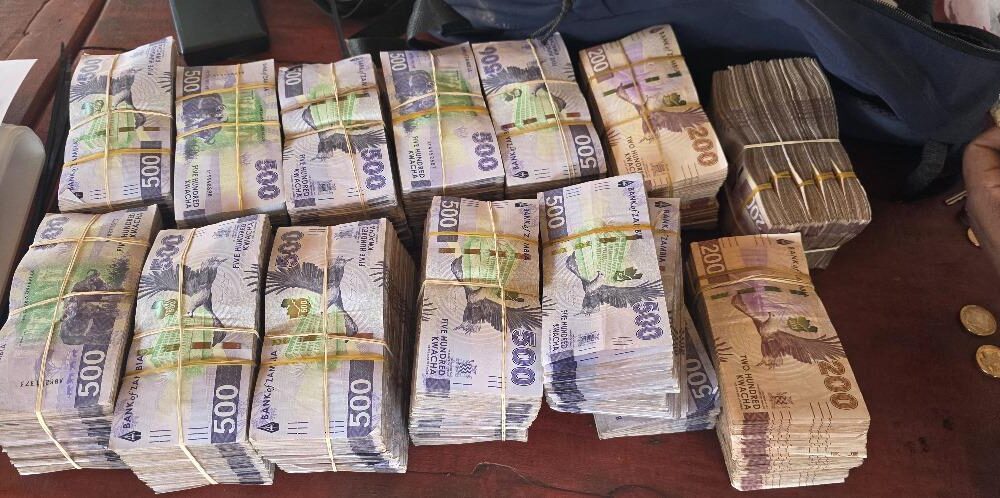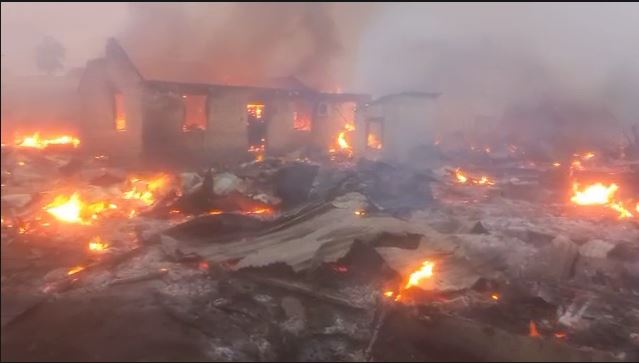By Mwebantu Editor
Copyright mwebantu

ON Friday, President Hakainde Hichilema opened the Fifth Session of the Thirteenth National Assembly. For many, this may have sounded like another government speech, but for economists and ordinary Zambians alike, it was a reflection of where we stand as a nation and where we are headed. The message was clear: Zambia is consolidating its gains, stabilising the economy, and turning reforms into real benefits for the people.
Let me break down what this means for us sector by sector.
A Stronger Macro Story
For years, Zambia was trapped in low growth, high inflation, and unsustainable debt. The President reported average growth of over 5 percent in the past three years, compared to just 1.5 percent before 2021. That is not a small achievement. It means businesses can plan, investors can trust our policies, and households feel less pressure from runaway prices. Debt restructuring covering 92 percent of our external liabilities is a big win—freeing space for development spending rather than endless repayments. Inflation is cooling, and the kwacha is more stable. This is the bedrock on which all other reforms rest.
Agriculture – From Surplus to Regional Powerhouse
Perhaps the biggest applause belongs to our farmers. A historic maize harvest of 3.7 million tonnes has turned Zambia from deficit fears into a surplus economy. The government’s reforms in the Farmer Input Support Programme—migrating farmers to a digital voucher, removing ghost beneficiaries, and involving the private sector—are paying off. Fertiliser and seed self-sufficiency is another milestone, turning Zambia into a seed exporter in Africa.
The future looks brighter still. With irrigation schemes and mechanisation centres spreading nationwide, Zambia can reach the President’s ambitious 10 million tonnes maize target by 2030. Agriculture is no longer just about feeding ourselves; it is becoming a wealth creator for farmers and rural households.
Livestock and Fisheries – Rural Wealth on the Rise
The President’s commitment to livestock is encouraging. With 90 percent vaccination coverage against cattle diseases and new investments in vaccine plants, Zambia is laying the foundation for a billion-dollar beef export industry. This is diversification at its best—spreading prosperity beyond the Copperbelt mines into rural provinces.
Fisheries are also growing, with production up from 178,000 tonnes to nearly 200,000 tonnes. This means more protein for local diets, more income for smallholders, and a stronger case for Zambia as a food exporter.
Mining – Confidence Restored
Mining remains Zambia’s backbone, and for too long uncertainty clouded the sector. Resolving disputes at Mopani and KCM was a game changer, unlocking over $2 billion in new investments and saving thousands of jobs. Output is rising again, with Zambia on track to hit one million tonnes of copper in 2025 for the first time in our history.
Investments at Lumwana, Kansanshi, and new mines like Mingomba and Kitumba show renewed international confidence. What does this mean? More jobs, more revenue for government, more contracts for Zambian suppliers, and more foreign exchange to stabilise our economy.
Tourism – Zambia on the World Map
Tourist arrivals reached a record 2.2 million in 2024, thanks to visa waivers, aggressive marketing, and improved roads to national parks. Campaigns like Destination Zambia are paying off, while domestic tourism has doubled as Zambians are encouraged to explore their own country
Tourism is more than sightseeing; it is jobs for youths in Livingstone, lodges in South Luangwa, and guides in Kafue. It spreads benefits across rural communities while showcasing Zambia’s culture and natural beauty.
Energy – Pain Today, Progress Tomorrow
Yes, Zambians are feeling the sting of load-shedding. But the President was candid and outlined solutions. New solar projects, thermal expansion, and private sector entry through open access and net metering are changing the game.
The numbers are huge—over 700 megawatts of new solar capacity coming online soon and a 10 gigawatt goal by 2030. Energy is both the Achilles heel and the golden opportunity. If these projects are delivered, Zambia will not only power its own industries but also export electricity to neighbours. That is how energy becomes a wealth creator.
ICT and Digital Growth – The New Frontier
The ICT sector grew 17 percent last year, with mobile money transactions hitting nearly half a trillion kwacha. Internet subscriptions and smartphone use continue to expand. This means financial inclusion is no longer a slogan; it is reality. Farmers can sell produce, students can access lessons, and businesses can transact without cash.
Digital reforms in government—moving services online and reducing corruption—show that technology is as much about governance as it is about business. The digital economy is becoming a real driver of growth.
Trade, Investment, and Capital Markets – Zambia as a Hub
Non-traditional exports grew by $1 billion in just three years, while the Lusaka Stock Exchange surged by over 50 percent. This reflects confidence and real opportunities. Special Economic Zones are spreading to provinces, attracting billions of dollars and creating tens of thousands of jobs.
This is how Zambia transforms from a copper-dependent economy to a diversified one. By spreading industries to districts and provinces, every Zambian can have a stake in the growth story.
MSMEs – The Real Job Creators
Micro, small, and medium enterprises are the lifeblood of our economy. Raising CEEC funding from just K40 million to K1.5 billion annually is unprecedented. It is a bold statement that Zambians must be given capital to build their businesses.
Of course, repayment culture is key, and financial literacy must be strengthened. But the fact that government is betting on MSMEs shows a vision for inclusive growth, where every citizen can participate in wealth creation.
Education, Health, and Social Protection – Human Capital as Infrastructure
Free education has brought 2.3 million children back to school. Over 42,000 teachers and 18,000 health workers have been recruited. Hospitals, clinics, schools, and desks are being built across the country. Medicines are more available, and social cash transfers now reach over 2 million people.
This is not just social spending; it is economic investment. An educated, healthy population is the most important driver of productivity and long-term growth. Social protection cushions the vulnerable, ensuring that no one is left behind even during droughts or shocks.
Governance and Rule of Law – The Confidence Factor Improved corruption scores, access to information laws, and digitised services are strengthening Zambia’s governance environment. Investors look at these reforms when deciding where to put their money. Ordinary citizens feel them when services become easier and corruption is punished.
Decentralisation through an expanded Constituency Development Fund has transformed local economies. Communities now decide their priorities, build roads, classrooms, and clinics without waiting on Lusaka. That is economic empowerment in action.
A Positive Outlook
The President’s address shows that Zambia is no longer in survival mode; we are in growth mode. Agriculture is booming, mining is reviving, tourism is flourishing, energy reforms are underway, ICT is exploding, and human capital is being built. The macro foundations are stronger, and governance is improving.
Of course, challenges remain—especially energy and the need for consistent execution. But the direction is right, and the gains are real.
For Zambia’s economy, this speech was not rhetoric; it was evidence. Evidence that when reforms are consistent, discipline is maintained, and inclusion is prioritised, the numbers start to reflect in people’s lives.
The task now is to stay the course, finish what has been started, and ensure that every Zambian—farmer, miner, teacher, student, or entrepreneur—feels part of this growth story.



